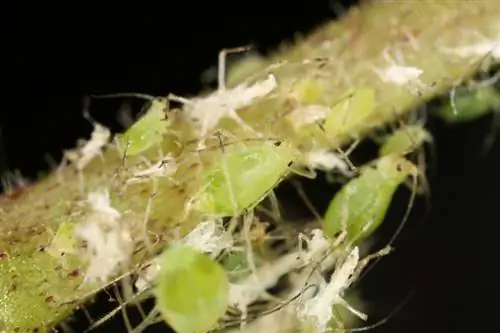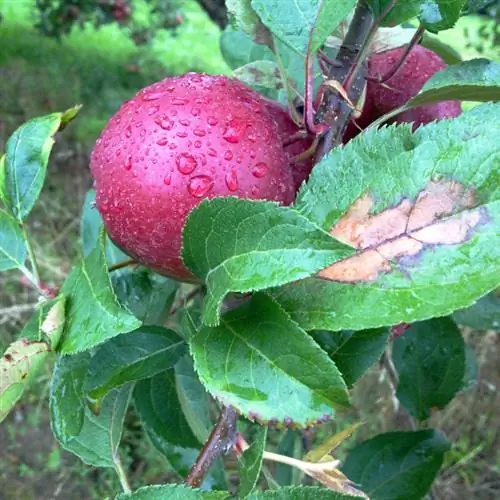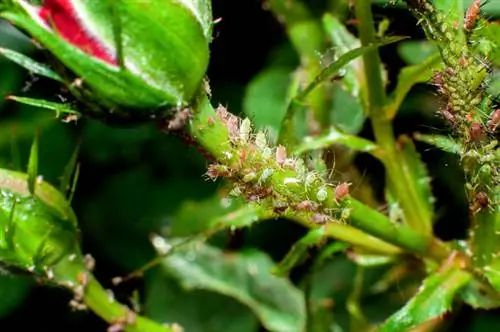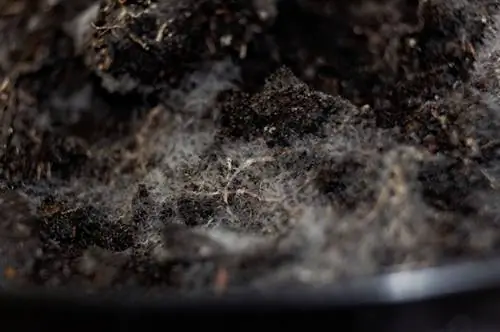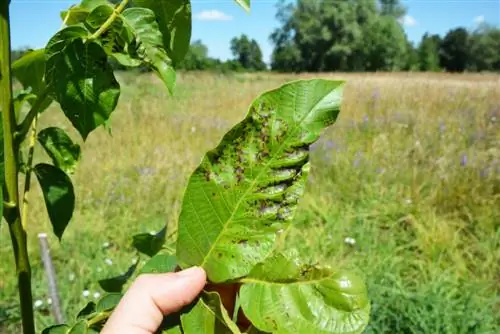- Author admin [email protected].
- Public 2023-12-16 16:46.
- Last modified 2025-06-01 06:02.
The globe trumpet tree (Catalpa bignonioides) is not only a striking appearance, but also quite useful: its leaves in particular contain a slightly scented toxin that reliably keeps mosquitoes away. In contrast to its larger relative, the trumpet tree, this variant only blooms very rarely and when it does, then only at an advanced age. The tree, which is actually quite easy to care for, is rarely attacked by pests, but is quite susceptible to certain diseases.
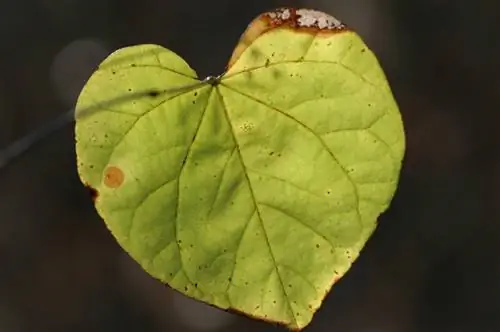
Which diseases are typical for globe trumpet trees and how can you treat them?
Ball trumpet tree is susceptible to diseases such as verticillium wilt and powdery mildew. Prevention is the best protection, for example through regular watering, fertilization and he althy soil. If infested, affected plant parts can be cut back and treated with strengthening agents.
Only prevention helps against verticillium wilt
Unfortunately, the globe trumpet tree is quite susceptible to verticillium wilt, also known as wilt disease. This is caused by fungi living in the soil, which reach through the roots into the pathways of the above-ground parts of the plant and block them. As a result, the plant is no longer adequately supplied with water and nutrients, so that individual shoots initially wither and die and individual leaves turn yellow and/or curl. There is no effective antidote for this usually fatal disease, all you can do is prevent it:
- Never plant a susceptible deciduous tree in a location where verticillium wilt has already occurred.
- Place the globe trumpet tree in well-ventilated, nutrient-rich soil.
- Water and fertilize regularly or as needed.
- When cutting work, only use sharp and clean tools.
- Use an herbal tonic.
What to do if you have signs of wilt disease?
If you notice the first signs of verticillium wilt on your trumpet tree, you can still try to save it:
- Cut affected plant parts radically back to the he althy wood.
- Dig up the tree and carefully rinse off the adhered soil.
- Remove roots that appear diseased.
- Plant the tree in a he althy location or in a container.
- Never dispose of cut plant parts in the compost.
- Treat the tree with a plant strengthener (83.00€ on Amazon).
Mildew - typical in hot summers
An infection with powdery mildew can be easily recognized by the white-grayish, mealy-looking fungal growth that covers the leaves and shoots of the infected tree. This disease often occurs in very hot summers, but is usually very easy to treat. To do this, you can spray the affected trumpet tree with a whole milk-water mixture (in a ratio of 1:10) for several days in a row.
Tip
The fire crust fungus - which fortunately occurs very rarely - usually has fatal consequences for the tree. The same precautionary and treatment measures apply as for wilt disease.


